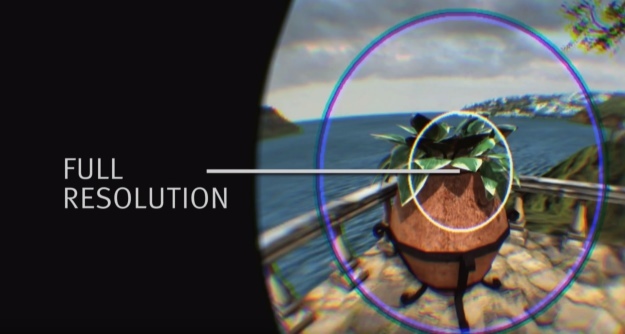And for very specific models of just Samsung phones. They also lock in the Gear VR apps so they are built only for their phones. Taking another high spec Android phone and dropping it into some kind of face visor won’t work.
Not much of a solution IMO.
I remember the first time my hardware was inadequate to the task. I just bought this new game called “Unreal” only to find that since I had no “graphics accelerator”, it ran in “software mode” so instead of Duke Nukem-like action, I got slowness, lag, and none of the fanciness like fog promised by the Unreal marketing. I had to buy my first graphics card, which I think was Voodoo Graphics.
As long as I’m being nostalgic, I’ll mention the first time I ever heard of VR—in the '90s, at UVA, they had a “VR-lab” exploring this new idea. I read the article in one of the student newspapers: you put on this big helmet and see a scene that is mostly a line drawing, and if you move slowly enough, the scene will move appropriately with a few seconds lag. This was the future! But I was playing Hexen on Virginia-govt. owned machines (installed by another student against the governor’s recent executive order), so I wasn’t too impressed.
One possible answer to the resolution problem: foveated rendering

Basically extreme close range eye tracking, so the scene only renders stuff that the eye is focusing on at very high resolution, and the rest can be much lower resolution.
I find it to be a little paradoxical.
- You expect VR graphics to be at least 4k, which is more than average, because it’s close to the face.
- You expect to do this wirelessly.
- You expect to do this with a small weightless device.
#2 and #3 are possible, but they conflict with #1.
Desktops with wired monitors will always be more powerful than a device 1/100th the size.
Therefore, the VR graphics will always be lower than what you get from other experiences, until VR experience improves past the biological limitations we have.
At which point, all gaming might as well be VR, even if that VR is just simulating a 2d monitor.
Sony’s second crack at this is a bit more credible… we are slowly getting to what I consider to be the basic table stakes for VR I outlined in my 2015 blog post of 4k per eye at constant 60+fps…
but “4k per eye”? Hmm.
2000 × 2040 = 4.0m
3840 × 2160 = 8.3m
Hard to argue that’s 4k per eye with half the pixels!
1 Like
The display itself is absolutely bonkers: a 4K display for each eye, with pixels just 23 microns in size. In the short time I tried it, it was totally workable for reading text in Safari (I loaded The Verge , of course), looking at photos, and watching movies. It is easily the highest-resolution VR display I have ever seen. There was some green and purple fringing around the edges of the lenses, but I can’t say for certain if that was down to the quick fitment or early demo nature of the device or something else entirely. We’ll have to see when it actually ships.
4k for each eye? You don’t say…
1 Like
